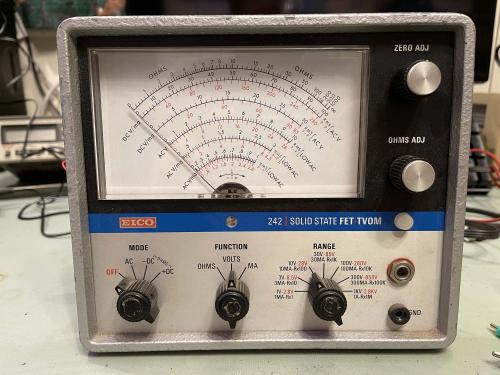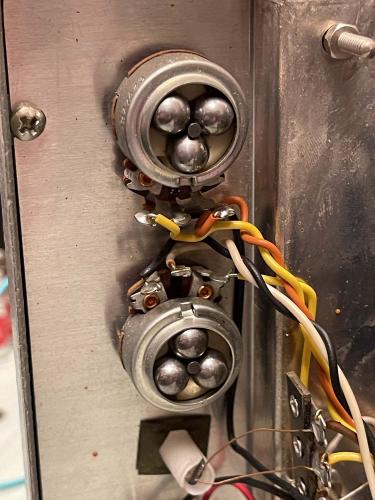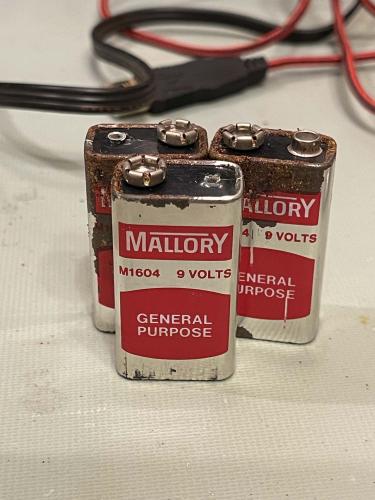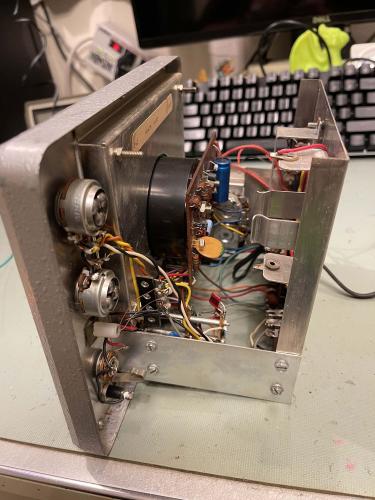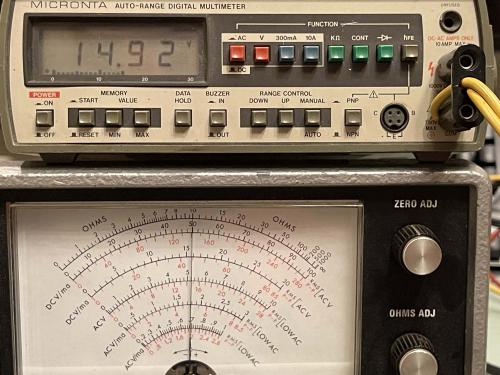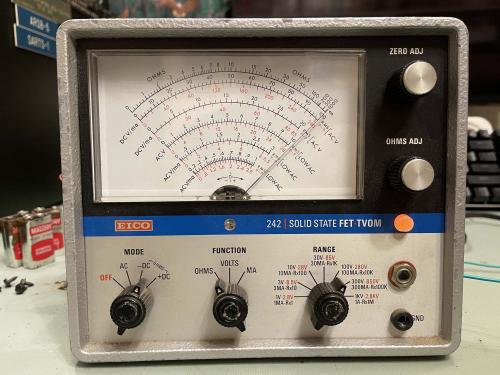- 2024
- Nov
- 3
An EICO 242 FET VOM
This device came to me from the Columbus Hamfest, another piece from an estate sale. It’s part of my “I can’t go home without a voltmeter” thing, and I figured it’s small enough that it would make a nice bench “no tubes” meter.
It’s built on EICO’s late model transistor chassis, and features everything you’d expect from a FET VOM. High impedance, a big face, and multiple ranges. Oddly absent is a mirror for parallax error resolution, which seems like it would have been a cheap thing to have. Also odd is EICO’s choice of a phone jack for input. There’s some muttering in the manual about that, but it’s just a gimmick from what I can see. Kind of locks you in to their probes. What’s not good about that is the tip is hot, so if your probe gets pulled out live (or inserted live) you can can hit the ring, which is ground. I need to figure out how to re-make this and make it safe(r).
Some of the parts are quite well made. Take these 10-turn ball-bearing pots. These things turn so smooth.
The device can either run on AC line, or 3 9V batteries and 1 1.5V D-Cell. Sort of.
The D-Cell had been removed, but the 9V batteries were still there.
How long has it been since Mallory made batteries? Long enough that these were coated with carbon-zinc rust. Some of the terminals were corroded into the snaps, which is not a big deal. I don’t expect to use this thing on batteries.
The unit consists of a single board and some parts on strips. It’s really pretty simple, just some differential amps and the FET on the input.
After removing the batteries, I powered it on. DC measurement is off - but there are cal pots inside.
Ohms…that didn’t work. The device stayed on zero and the ohms control did nothing, whereas the zero control slammed the needle to the left. A quick check of the schematic showed something interesting - a 1.5V battery! Turns out this thing NEEDS the 1.5V D-Cell, even when operating off line. I just happened to have one, in it went, and…yep. That works now.
There’s nothing wrong with this save it needs a good warm-up and cal. I’ll probably do that sometime in the next few weeks and get this thing installed on the bench - after I make a probe adapter, of course!
